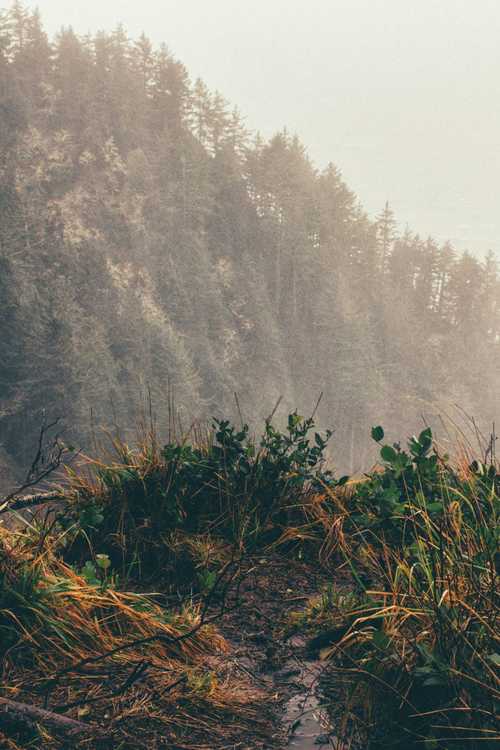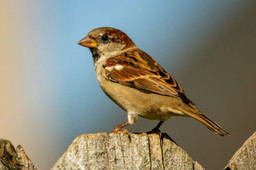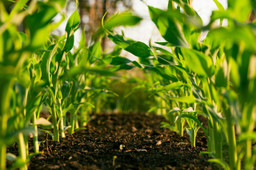
Silence is falling: the loss of nature sounds
A recent UK Guardian article summed up a truth behind field recording which we would surely all prefer not to acknowledge: ‘World Faces ‘Deathly Silence’ of Nature as Wildlife Disappears, Warn Experts’. Tragically, this won’t come as a surprise to anyone who pays even glancing attention to the parlous state of the natural world: “wildlife populations have declined by an average 69% in the past 50 years” – a global rate of decline “unprecedented in millions of years”, with “the rate of species extinctions […] accelerating”.
The loss of species we have never personally encountered, or of far-flung, ‘exotic’ habitats we have never visited, may be ideologically horrifying, yet this horror exists at a remove. On the other hand, a life without nature sounds is a far more immediate prospect, given that these sounds are perhaps our foremost connection to nature (particularly for the 56% of the world’s population which now lives in cities). This immediacy is easy to take for granted, in a way that makes its creeping loss all the more distressing.
A further article, based around the experiences of soundscape ecology doyen Bernie Krause, describes the gradual loss of nature sounds in a particular location within Sugarloaf Ridge state park, near San Francisco, which he has revisited annually for 30 years. In 1993, from a desire to document the habitat’s relaxing sonic beauty, Krause recorded “a stream of chortles, peeps and squeaks erupt[ing] from the animals that lived in the rich, scrubby habitat”. But, on listening to last year’s recording, he “was greeted with something he had not heard before: total silence”. And this is no fluke: “What’s happening here is just a small indication of what’s happening almost everywhere on an even larger scale.” As early as 2012, Krause warned of “a great silence […] spreading over the natural world even as the sound of man is becoming deafening”. Now, he estimates that, of the 5,000 hours of recordings he made across the world, over more than 50 years, “70% […] is from habitats that no longer exist”.
Why is the loss of nature sounds significant?
Nature sounds are “one of the fundamental pathways through which humans engage with nature”. In terms of living beings, birds are perhaps the lifeform we most relate to via the sonic world. It’s true that, for a city dweller, scenarios in which their sonic presence throws its usual absence into relief may be more common than the reverse, but their songs, alarm calls, and beating wings is compounded by their visibility and our perception of their beauty (in a way that isn’t true of, say, the presence of largely unseen cicadas). (Sidenote: in five years, this urban writer has observed precisely one wren, one sparrow, one magpie, three great tits, and a handful of pigeons on his roof terrace; during their occasional visits, the tits’ exuberant conversations with one another have been melodic manna from heaven.)

This is not to suggest that the encroaching silence only affects avian populations: in terms of other sounds that most of us might reasonably expect to encounter, the “rustle of mammals through undergrowth and summer hum of insects” is also very much under threat.
Perhaps the most insidious element of this situation is the effect of the everpresent shifting baseline syndrome, which means that, because of our lack of awareness beyond our own personal experience, we can’t fully grasp the scale of the changes which are taking place. Even if we haven’t noticed these changes ourselves, we must all have grandparents (or, indeed, parents – such is the rate at which habitat loss and extinctions are accelerating) who are able to reminisce about experiences of natural phenomena which no longer occur. For example, see environmentalist Tony Juniper’s outlining of the species now absent from the dawn chorus on his street in Cambridge, England, or ornithologist Seán Ronayne sharing his father’s memories of immense mackerel breaks spanning kilometers across Cork Harbour, Ireland, in the 1960s and ’70s.
The latter is a reminder that nature sound loss isn’t limited to terrestrial locations: Professor Steve Simpson, of the University of Bristol, England, describes healthy coral reefs as cacophonous “carnival[s] of sound”. Yet upwards of half the coral reefs on the planet have been lost since 1950, with bleaching events in 2015 and 2016 alone “result[ing] in 80% mortality”. It’s from these events that the title of the Guardian article takes its “deathly silence”. And, should global heating increase to 2 °C, “more than 99% of coral reefs are expected to start dying”, casting that veil of silence ever wider.

Even the land itself harbors a world of sound that has only recently been revealed by the availability of increasingly sophisticated microphones. In fact, soil is now considered to be the “most biodiverse habitat on Earth”, “home to 59% of life including everything from microbes to mammals”. Sound artist and acoustic ecologist Marcus Maeder has described the “new kingdom of sounds” revealed by inserting a microphone into the ground of a mountain meadow: “thrumming and chirring and scraping”. In contrast, the soil of agricultural land, its subterranean population having been subjected to a pesticidal barrage, is described as “becom[ing] quiet”.
It’s observations like this that have allowed acoustic monitoring to be used alongside visual data as techniques for monitoring natural habitats’ declining health. And not only does this decline paint a bleak picture of the state of the natural world, the relatively recent acceptance of the positive effects that the sounds of that world have on our mental health means that their “chronic decline [has] potentially widespread implications for human health and wellbeing”.
What can be done to reverse this trend?
To eke some optimism from this otherwise gloomy subject, we can look to examples where animal life – and therefore, its accompanying sounds – have been coaxed into recovery. These situations are, sadly, few and far between, but one is the capital of New Zealand, Wellington, which is “experiencing a crescendo in birdsong, thanks to decades of conservation efforts”, including “widespread community work”. Now, having been reintroduced after a hundred-year absence, national bird the kiwi can be calling at night from the hills around the city, and burrowing kororā (little penguins) have made themselves at home around suburban houses.

Sound itself can also be used in conservation efforts: “play[ing] recordings of rainfall [can] trigger breeding in frogs” and oyster larvae can be attracted to the sound of snapping shrimp (which connotes a healthy reef), while animals’ own sounds can be used as “acoustic lures” to encourage species such as bats, whales, or fish to frequent (or avoid) particular locations. The seabird population of the remote Palmyra Atoll was decimated by black rats introduced by US military ships during World War II. In 2011 – some 66 years later – these invasive predators were finally eliminated, but it took a recovery programme involving blasting recordings of seabirds from solar-powered loudspeakers to encourage these species back to the island.
It seems that, in addition to re-vegetation, using “sound [as] an invitation” may be a key to promoting recovery from “large-scale disasters like forest fires, coral bleaching, blackwater events or catastrophic storms”. Using this technique to attract animal populations back to depopulated locations allows “the seeds, spores, bacteria and fungi they carry” to catalyze a process of renewal, “fast-tracking [the] recovery of entire food webs from the ground up”.
Earth.fm is a completely free streaming service of 1000+ nature sounds from around the world, offering natural soundscapes and guided meditations for people who wish to listen to nature, relax, and become more connected. Launched in 2022, Earth.fm is a non-profit and a 1% for the Planet Environmental Partner.
Check out our recordings of nature ambience from sound recordists and artists spanning the globe, our thematic playlists of immersive soundscapes and our Wind Is the Original Radio podcast.
You can join the Earth.fm family by signing up for our newsletter of weekly inspiration for your precious ears, or become a member to enjoy the extra Earth.fm features and goodies and support us on our mission.
Subscription fees contribute to growing our library of authentic nature sounds, research into topics like noise pollution and the connection between nature and mental wellbeing, as well as funding grants that support emerging nature sound recordists from underprivileged communities.

